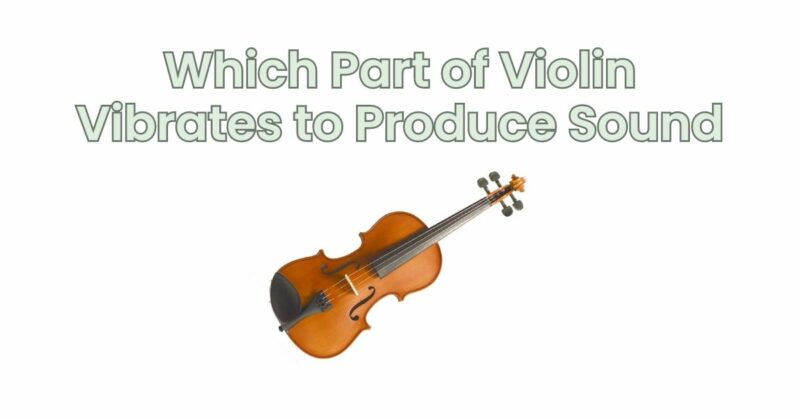The violin, renowned for its captivating sound, relies on the vibrations of its components to produce its distinct and melodious tones. While several parts of the instrument contribute to sound production, one crucial element stands out—the soundboard. In this article, we will explore the role of the soundboard in vibrating to generate sound and its significance in shaping the violin’s sonic character.
The Soundboard: The Vibrating Heart of the Violin: The soundboard, also known as the top plate or soundboard plate, is a vital component of the violin. Made from carefully selected spruce, it is intricately carved and shaped to optimize its acoustic properties. Situated on the top of the instrument’s body, the soundboard acts as a resonating surface responsible for amplifying and projecting the sound produced by the vibrating strings.
Vibration Transmission from Strings to Soundboard: When a violinist plays the instrument, the vibrating strings transfer their energy to the soundboard via the bridge—a small wooden component that supports the strings and ensures their proper spacing. As the strings vibrate, their energy is transmitted to the bridge, which then transmits the vibrations to the soundboard. This transfer of energy sets the soundboard into motion, causing it to vibrate sympathetically.
Soundboard Resonance: The soundboard’s ability to vibrate freely and resonate in response to the strings’ vibrations is crucial for sound production. As the soundboard vibrates, it creates sound waves that propagate through the air, eventually reaching our ears. This resonance greatly enhances the volume, projection, and tonal characteristics of the violin’s sound, giving it depth, richness, and warmth.
Tap Tone: Assessing the Vibrational Properties: Luthiers and violin makers pay careful attention to the vibrational properties of the soundboard during the instrument’s construction. They assess the tap tone, which is the sound produced when tapping or rapping on the soundboard. The tap tone helps determine the soundboard’s stiffness, responsiveness, and resonance qualities, ensuring optimal sound production.
Soundpost and Soundboard Interaction: Inside the violin, a small wooden dowel called the soundpost plays a crucial role in sound production. The soundpost is strategically positioned beneath the treble side of the soundboard, connecting it to the back plate. It helps support the soundboard and facilitates the transmission of vibrations between the two plates. This interaction contributes to the violin’s overall tonal balance, projection, and responsiveness.
Effect of Soundboard Material and Design: The choice of materials, as well as the design and construction of the soundboard, significantly impact the violin’s sound. High-quality spruce, with its favorable acoustic properties, is commonly used for soundboard construction. The precise shaping, carving, and thickness of the soundboard, along with other factors such as graduations and f-hole design, influence its ability to vibrate and produce a desired sound quality.
Conclusion: Within the intricate world of the violin, it is the soundboard that serves as the vibrating heart, translating the energy of the vibrating strings into the resonant and captivating sound that defines the instrument. The soundboard’s ability to vibrate freely, resonate harmoniously, and interact with other components contributes to the violin’s distinct sonic character. Its careful construction, material selection, and craftsmanship ensure the optimal transmission of sound, allowing the violinist to express themselves with the instrument’s soulful voice. Understanding the significance of the soundboard’s role in sound production deepens our appreciation for the vio


